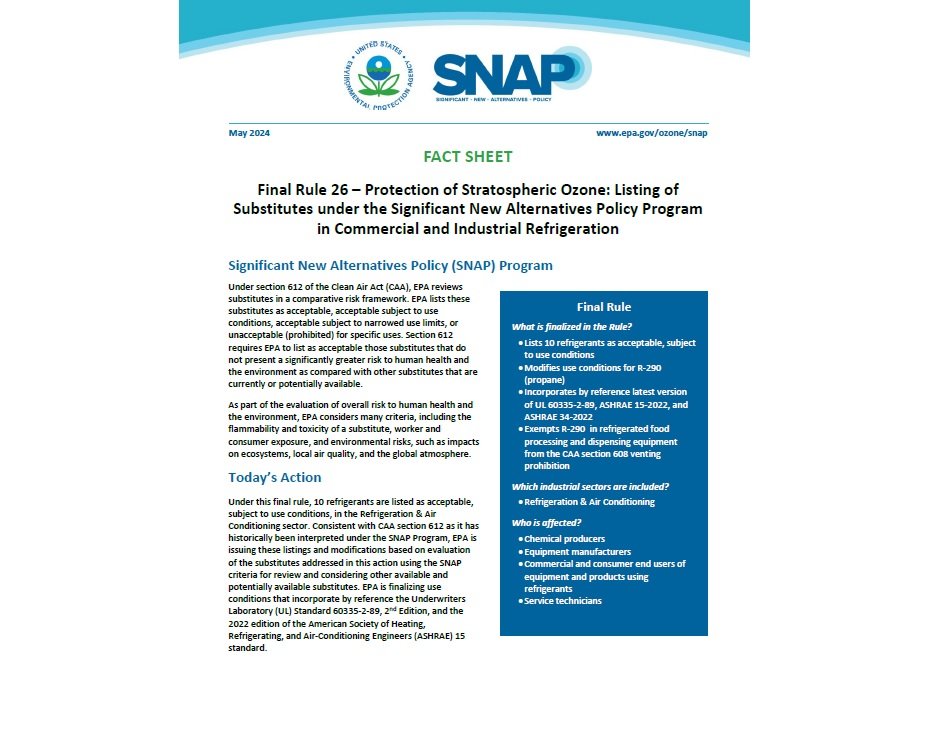The U.S. Environmental Protection Agency (EPA) has announced the finalization of Rule 26 under the Significant New Alternatives Policy (SNAP) Program, focusing on the protection of the stratospheric ozone layer through the listing of substitutes in commercial and industrial refrigeration. This rule, part of the broader efforts under the Clean Air Act (CAA), addresses the use of refrigerants that are safer for human health and the environment.
The SNAP Program, under section 612 of the CAA, evaluates substitutes for ozone-depleting substances based on a comparative risk framework. The substitutes are categorized as acceptable, acceptable subject to use conditions, acceptable subject to narrowed use limits, or unacceptable for specific uses. The criteria for evaluation include flammability, toxicity, exposure risks, and environmental impacts.
Key Highlights of Final Rule 26:
-
Acceptable Refrigerants: The rule lists 10 refrigerants as acceptable, subject to use conditions in the refrigeration and air conditioning sector. These refrigerants include HFC-32, HFO-1234yf, R-454A, R-454B, R-454C, R-455A, R-457A, and R-516A for various applications such as commercial ice machines, industrial process refrigeration, cold storage warehouses, ice skating rinks, and retail food refrigeration.
-
Modified Use Conditions for R-290 (Propane): The rule modifies the use conditions for R-290, previously listed as acceptable for certain applications, to align with the latest industry standards. These conditions incorporate references to the Underwriters Laboratory (UL) Standard 60335-2-89, 2nd Edition, and the 2022 edition of the American Society of Heating, Refrigerating, and Air-Conditioning Engineers (ASHRAE) 15 standard.
-
Venting Prohibition Exemption: The final rule exempts R-290 in refrigerated food processing and dispensing equipment from the CAA section 608 venting prohibition, facilitating its use in new equipment designed specifically for this refrigerant.
-
Phasing Down HFCs: Consistent with the American Innovation and Manufacturing (AIM) Act, the U.S. is phasing down the use of hydrofluorocarbons (HFCs) and transitioning to lower-global warming potential (GWP) alternatives. This rule supports the broader efforts to reduce the environmental impact of refrigerants.
Impact on Industry:
The rule affects chemical producers, equipment manufacturers, commercial and consumer end users, and service technicians involved in the refrigeration and air conditioning sectors. The adoption of these new refrigerants and adherence to updated use conditions are expected to enhance environmental protection while maintaining effective refrigeration and cooling systems.
For more detailed information on the specific use conditions and the effective dates, stakeholders are encouraged to consult the full text of the final rule.
This final rule underscores the EPA’s commitment to protecting the stratospheric ozone layer and promoting safer alternatives in the refrigeration and air conditioning industry.
For further details, please visit the EPA’s website: www.epa.gov/ozone/snap.
